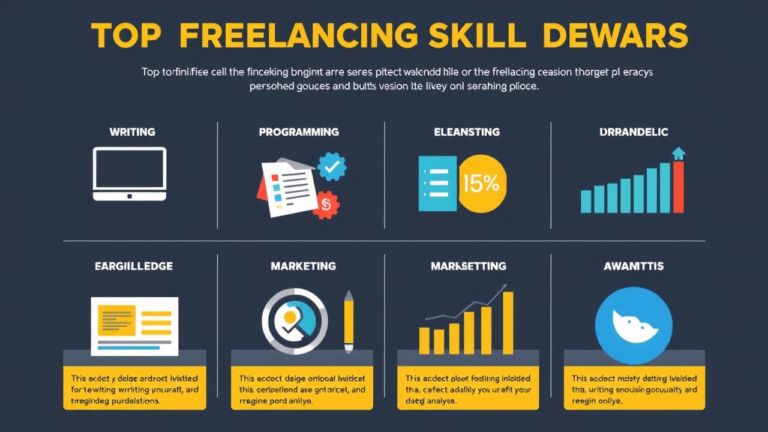YouTube Monetization: How to Earn from Videos
Introduction
YouTube has become one of the most popular platforms for content creators to share their videos with the world. With over 2 billion logged-in monthly users, YouTube offers a massive audience for creators to reach. However, beyond just sharing content, YouTube also provides an opportunity for creators to earn money through its monetization program. This article will explore the various ways to monetize your YouTube channel, the requirements for eligibility, and strategies to maximize your earnings.
Understanding YouTube Monetization
What is YouTube Monetization?
YouTube monetization refers to the process by which content creators can earn money from their videos on the platform. This is primarily achieved through the YouTube Partner Program (YPP), which allows creators to earn revenue from ads displayed on their videos. However, there are also other ways to monetize your content, such as through channel memberships, merchandise sales, and Super Chats.
The YouTube Partner Program (YPP)
The YouTube Partner Program is the primary way for creators to monetize their content. To be eligible for the YPP, creators must meet certain requirements set by YouTube. Once accepted into the program, creators can start earning money from ads displayed on their videos.
Eligibility Requirements for the YouTube Partner Program
To be eligible for the YouTube Partner Program, creators must meet the following requirements:
- Subscriber Count: You must have at least 1,000 subscribers on your channel.
- Watch Hours: Your channel must have accumulated at least 4,000 watch hours in the past 12 months.
- AdSense Account: You need to have an active AdSense account linked to your YouTube channel.
- Compliance with YouTube Policies: Your channel must comply with all of YouTube’s policies and guidelines, including its Community Guidelines, Terms of Service, and Advertiser-friendly content guidelines.
Once you meet these requirements, you can apply for the YouTube Partner Program. If approved, you can start monetizing your videos through ads.
Ways to Monetize Your YouTube Channel
1. Ad Revenue
Ad revenue is the most common way for YouTube creators to earn money. When you join the YouTube Partner Program, you can enable ads on your videos. YouTube will then display ads before, during, or after your videos, and you will earn a share of the revenue generated from those ads.
Types of Ads on YouTube
- Display Ads: These are banner ads that appear on the side or top of the video player.
- Overlay Ads: These are semi-transparent ads that appear on the lower portion of the video.
- Skippable Video Ads: These are ads that viewers can skip after 5 seconds.
- Non-Skippable Video Ads: These are ads that viewers must watch before they can continue to the video.
- Bumper Ads: These are short, non-skippable ads that last up to 6 seconds.
- Sponsored Cards: These are small, interactive cards that appear within the video and promote products or services.
How Ad Revenue is Calculated
Ad revenue is calculated based on several factors, including the number of views, the type of ads displayed, and the advertiser’s bid. YouTube uses a metric called CPM (Cost Per Mille), which represents the amount of money you earn per 1,000 ad impressions. The CPM can vary widely depending on factors such as the audience’s location, the content of the video, and the time of year.
2. Channel Memberships
Channel memberships allow your viewers to pay a monthly fee in exchange for special perks, such as exclusive badges, emojis, and access to members-only content. To offer channel memberships, your channel must have at least 30,000 subscribers and be part of the YouTube Partner Program.
Benefits of Channel Memberships
- Recurring Revenue: Channel memberships provide a steady stream of income, as members pay a monthly fee.
- Engagement: Memberships can help increase viewer engagement, as members are more likely to interact with your content.
- Exclusive Content: You can offer exclusive content to members, which can help build a loyal community.
3. Merchandise Shelf
The merchandise shelf allows you to showcase your official merchandise directly on your YouTube channel. This feature is available to channels that are part of the YouTube Partner Program and have at least 10,000 subscribers.
How to Set Up the Merchandise Shelf
- Choose a Merchandise Partner: YouTube has partnered with several merchandise companies, such as Teespring and Spreadshop, to help creators sell their products.
- Create Your Merchandise: Design and create your merchandise using your chosen partner’s platform.
- Link Your Merchandise to Your Channel: Once your merchandise is ready, you can link it to your YouTube channel and start selling.
4. Super Chat and Super Stickers
Super Chat and Super Stickers are features that allow viewers to pay to have their messages highlighted during live streams and premieres. Super Chats are paid messages that appear prominently in the chat, while Super Stickers are animated images that viewers can purchase to show their support.
How Super Chat and Super Stickers Work
- Super Chat: Viewers can purchase Super Chats by selecting a dollar amount and typing a message. The more they pay, the longer their message stays pinned in the chat.
- Super Stickers: Viewers can purchase Super Stickers, which are animated images that appear in the chat. The stickers are available in different price tiers.
5. YouTube Premium Revenue
YouTube Premium is a subscription service that allows users to watch videos without ads and access exclusive content. As a creator, you can earn a share of the revenue generated from YouTube Premium subscribers who watch your content.
How YouTube Premium Revenue is Calculated
YouTube Premium revenue is calculated based on the amount of time YouTube Premium subscribers spend watching your content. The more time they spend watching your videos, the more you earn.
6. Affiliate Marketing
Affiliate marketing involves promoting products or services in your videos and earning a commission for every sale made through your affiliate link. This is a popular way for creators to monetize their content, especially in niches like tech, beauty, and fitness.
How to Get Started with Affiliate Marketing
- Join an Affiliate Program: Sign up for affiliate programs related to your niche. Some popular affiliate networks include Amazon Associates, ShareASale, and CJ Affiliate.
- Promote Products in Your Videos: Create content that naturally incorporates the products you’re promoting. Be transparent with your audience about your affiliate relationships.
- Include Affiliate Links: Add your affiliate links in the video description or as clickable annotations in the video.
7. Sponsored Content
Sponsored content involves partnering with brands to create videos that promote their products or services. In exchange, you receive payment from the brand. Sponsored content can be a lucrative way to monetize your channel, especially if you have a large and engaged audience.
How to Find Sponsorship Opportunities
- Reach Out to Brands: Contact brands that align with your content and audience. Pitch them on the value of partnering with your channel.
- Join Influencer Marketing Platforms: Platforms like AspireIQ, FameBit, and Grapevine connect creators with brands looking for sponsored content opportunities.
- Leverage Your Network: Use your existing connections to find sponsorship opportunities. Attend industry events and network with other creators and brands.
8. Crowdfunding
Crowdfunding allows your viewers to support your channel by making voluntary contributions. Platforms like Patreon, Ko-fi, and Buy Me a Coffee enable creators to receive donations from their audience.
How to Set Up Crowdfunding
- Choose a Crowdfunding Platform: Select a platform that aligns with your goals and audience.
- Create a Campaign: Set up a campaign that explains why you’re seeking support and what rewards you’ll offer to contributors.
- Promote Your Campaign: Share your crowdfunding campaign with your audience through your videos, social media, and other channels.
Strategies to Maximize Your YouTube Earnings
1. Create High-Quality Content
The foundation of a successful YouTube channel is high-quality content. Focus on creating videos that are engaging, informative, and entertaining. Invest in good equipment, such as a quality camera and microphone, and take the time to edit your videos professionally.
2. Optimize Your Videos for SEO
Search engine optimization (SEO) is crucial for getting your videos discovered on YouTube. Use relevant keywords in your video titles, descriptions, and tags to improve your chances of appearing in search results. Additionally, create eye-catching thumbnails and write compelling video descriptions to attract viewers.
3. Consistency is Key
Consistency is important for building an audience on YouTube. Upload videos regularly and stick to a schedule that your viewers can rely on. This will help you build a loyal audience and increase your chances of being recommended by YouTube’s algorithm.
4. Engage with Your Audience
Engaging with your audience is essential for building a strong community around your channel. Respond to comments, ask for feedback, and encourage viewers to like, share, and subscribe. The more engaged your audience is, the more likely they are to support your channel through ads, memberships, and other monetization methods.
5. Diversify Your Revenue Streams
Relying solely on ad revenue can be risky, as it can fluctuate based on factors outside your control. Diversify your revenue streams by exploring other monetization methods, such as channel memberships, merchandise sales, and sponsored content. This will help you create a more stable income and reduce your reliance on any single source of revenue.
6. Collaborate with Other Creators
Collaborating with other creators can help you reach a wider audience and grow your channel. Look for creators in your niche who have a similar audience and propose collaboration ideas, such as co-hosting a video or creating a joint project. Collaborations can also lead to new sponsorship opportunities and other monetization avenues.
7. Analyze Your Performance
Regularly analyze your channel’s performance using YouTube Analytics. Pay attention to metrics like watch time, audience retention, and click-through rate to understand what’s working and what’s not. Use this data to refine your content strategy and optimize your videos for better performance.
8. Stay Updated with YouTube’s Policies
YouTube’s policies and algorithms are constantly evolving, so it’s important to stay updated with any changes that could affect your channel. Follow YouTube’s official blog and social media channels to stay informed about new features, policy updates, and best practices for creators.
Common Mistakes to Avoid
1. Ignoring YouTube’s Guidelines
One of the biggest mistakes creators make is ignoring YouTube’s guidelines and policies. Violating these guidelines can result in your videos being demonetized, your channel being suspended, or even being permanently banned from the platform. Always ensure that your content complies with YouTube’s Community Guidelines, Advertiser-friendly content guidelines, and Terms of Service.
2. Focusing Solely on Ad Revenue
While ad revenue is an important source of income, relying solely on it can be risky. Ad revenue can fluctuate based on factors like changes in YouTube’s algorithm, advertiser demand, and viewer behavior. Diversify your revenue streams to create a more stable income and reduce your reliance on ad revenue.
3. Neglecting Audience Engagement
Neglecting audience engagement can hinder your channel’s growth and monetization potential. Engaging with your audience through comments, social media, and live streams can help build a loyal community that supports your channel through ads, memberships, and other monetization methods.
4. Overlooking Video SEO
Video SEO is crucial for getting your videos discovered on YouTube. Neglecting to optimize your videos for search can result in lower visibility and fewer views. Take the time to research keywords, write compelling titles and descriptions, and create eye-catching thumbnails to improve your video’s chances of being discovered.
5. Inconsistent Upload Schedule
Inconsistent upload schedules can make it difficult to build a loyal audience. Viewers are more likely to subscribe and engage with channels that upload content regularly and consistently. Create a content schedule that works for you and stick to it to keep your audience engaged and coming back for more.
Conclusion
YouTube monetization offers a wealth of opportunities for content creators to earn money from their videos. By joining the YouTube Partner Program, optimizing your content for SEO, and diversifying your revenue streams, you can maximize your earnings and build a sustainable income from your channel. Remember to stay updated with YouTube’s policies, engage with your audience, and continuously analyze your performance to refine your strategy and achieve long-term success on the platform.
With dedication, creativity, and a solid understanding of YouTube’s monetization options, you can turn your passion for creating videos into a profitable venture. Whether you’re just starting out or looking to take your channel to the next level, the strategies outlined in this article can help you achieve your goals and make the most of your YouTube journey.





